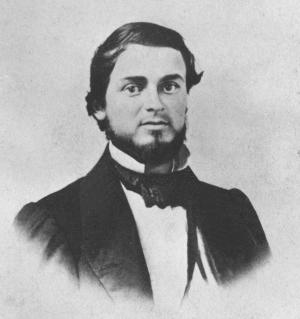Andrew Myrick facts for kids
Andrew J. Myrick (born May 28, 1832 – died August 18, 1862) was a trader who lived in southwest Minnesota. He ran stores near where the Dakota people lived, at two places called Native American agencies. His wife, Winyangewin (also known as Nancy Myrick), was Dakota.
In the summer of 1862, the Dakota people were in a very difficult situation. Their crops had failed, and they were starving. Payments and supplies from the U.S. government were delayed. Myrick is remembered for refusing to sell them food on credit. He is said to have told them, "Let them eat grass." However, some people now question if he truly said that.
Life as a Trader
In 1862, the eastern groups of the Dakota people lived on a small reservation. This land was along the southern side of the Minnesota River. Their crops had failed, and there were not enough animals to hunt. This meant they were starving.
On August 4, a meeting happened at the Upper Sioux Agency. The U.S. Indian Agent, Thomas J. Galbraith, decided to release only a small amount of food from the warehouse. This was because the government's payments and supplies were delayed. The American Civil War was happening, and the government was busy protecting Washington D.C.
Andrew Myrick had stores at both Yellow Medicine (also called the Upper Sioux Agency) and Redwood (Lower Sioux Agency). After Agent Galbraith decided not to give out more food, he asked the store owners what they would do. Myrick tried to make a deal with the Dakota groups. He offered to let them buy food on credit. In return, the traders would be paid directly from the federal payments once they arrived.
Death During Conflict
On August 18, 1862, Chief Little Crow led his warriors against U.S. settlements. This event marked the beginning of the Dakota War of 1862. Andrew Myrick was killed on the very first day of the conflict. He died at the Attack at the Lower Sioux Agency. Dakota warriors attacked the agency because it had refused to sell them food.


